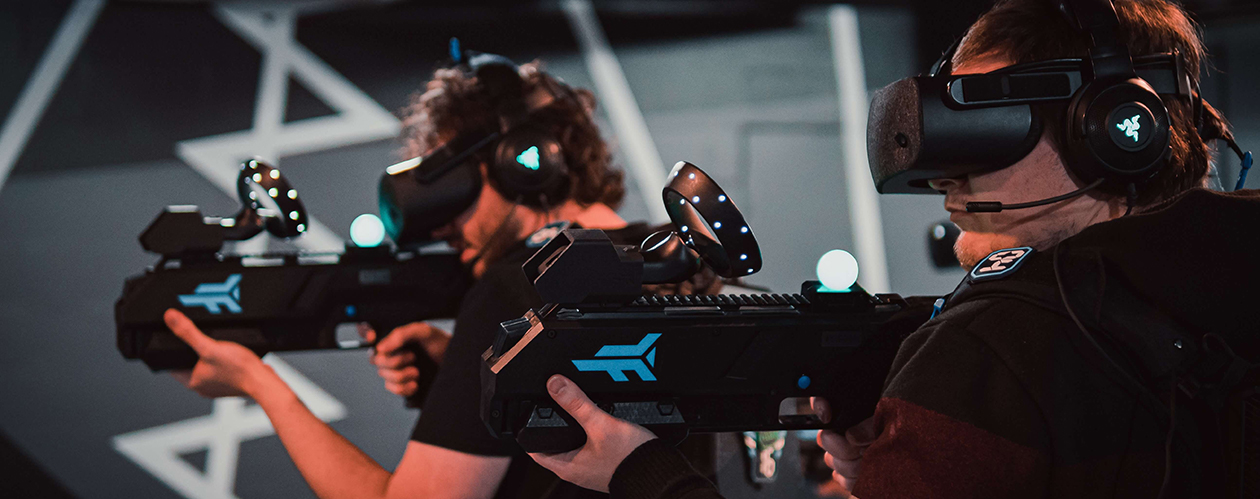
New Science Dimension Given by Virtual Reality
Virtual and augmented reality tools allow researchers to view and share data in a way like never before. When someone puts on a virtual reality (VR) headset, the outside world is about to disappear. Instantly, people see a different kind of reality on their virtual screens. They can explore many things and see all the details. VR is nothing new, but people’s interest has been on the rise since 2016 when gamers introduced several high-quality and relatively inexpensive commercial headsets to the public. This also happened with the advent of augmented reality (AR), which is a similar technology to VR that uses invisibility shields or cellphone screens to coat objects on top of the real environment.
Scientists say that VR and AR are more intuitive and interactive to view complex 3D structures. Many people are also looking for cheap smartphone-based headsets, which use smartphone screens as glasses, to increase their understanding of things related to their work. Their numbers are relatively small: VR and AR remain specialized tools for scientific research and provide different insights.
Some researchers, such as Wilian Cortopassi of the University of California, also gained scientific insights from VR exploration. He's using ChimeraX, a molecular visualization tool for proteins and other structures, which assists him to understand how certain mutants of a protein can block a given drug. However, VR can help detect some important interactions that happen.
While many tools are affordable, most visualization tools only work with the most expensive headsets - like Facebook's Oculus Rift, and Taiwanese electronics company Vive. Researchers and gamers have their own preferences, but the differences between the Oculus Rift and Vive are small. However, not all devices are compatible with headsets.
The computation of VR is very intensive because each of the ’eyes’ has to see a different image to produce a 3D effect, and because the image has to be refreshed quickly. In some cases, a new graphics card will add sufficient computation power. The Oculus Rift recommends using a VR-compatible computer with prices ranging from US $850 to nearly $3,100. The VR software itself can also be expensive. While ConfocalVR and ChimeraX are free for non-profit entities, they do not apply to commercial companies. It will cost you around $ 20,000, depending on the number of users.
AR Improving the Reality
Compared to VR, the visualization software for AR headsets is less sophisticated. Mark Hoffman, chief research information officer at Children's Mercy Kansas City, has tested it for protein viewing and computed tomography (CT) scans using Microsoft HoloLens. He mentioned that AR is more user-friendly than VR because users can see their surroundings and are less prone to disorientation. However, there is a downside. When the VR headset covers your entire field of view, HoloLens projects objects only onto a relatively narrow square in the center of your vision.
Cheaper Options
Cheaper headsets that use a smartphone as a display on a pair of glasses, such as the Samsung Gear VR or Google's Cardboard, could help researchers reach a wider audience.
An app designed for this simple device called Juicebox VR can visualize the connectivity of the human genome as a Mars-like landscape with colossal walls. The landscape features represent the topography of the DNA condensed in animal cells, and the ridges represent the junctions between different parts of the genome. Biologists have also adopted Augment, an app typically used to illustrate the appearance of furniture in a room, to allow colleagues, students and members of the public to examine 3D models of proteins through their smartphone screens.
If the researchers are interested in creating their own visualization tools, they can use Unity - software designed by Unity Technologies in San Francisco for games - which is one of the most commonly used development environments. For HoloLens, users don't need to be an expert developer to import 3D objects. But they must be familiar with Unity, as well as Microsoft's Visual Studio programming environment. Users can choose other options such as the Unreal Engine, from Epic Games in Cary, North Carolina, which is free for academic users, or OpenGL, a free-of-charge 3D graphics tool used in game development, computer-aided design, and flight simulators.
Although VR and AR tools have developed rapidly in recent years or so, only a few laboratories are using the technology. However, many proponents predict that VR and AR could become standard laboratory tools over the next five to ten years.
